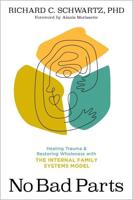Publisher's Synopsis
Myopia, commonly called nearsightedness, has been increasing globally. If current trends continue, there will be 5 billion near-sighted individuals globally by 2050. The understanding of myopia has been enhanced by advances in genetics, investigations employing animal models, understanding of physiology, ocular imaging, epidemiology, environmental research, and clinical trials of interventional strategies. To further develop the knowledge base related to myopia and to reduce the incidence and negative consequences of the disease, eye care professionals, federal agencies, and funding agencies need to make improvements to standardize care, increase funding to study treatments, encourage outdoor time, and overall facilitate the standardization of assessments and diagnostics. Progress in these areas is imperative to address the current increase in myopia across the country.
Myopia: Causes, Prevention, and Treatment of an Increasingly Common Disease identifies and assesses the current mechanistic understanding of myopia pathogenesis and the causes of its increased prevalence. This report also examines knowledge gaps and barriers to progress and develops a research agenda aimed at better understanding the biological and environmental factors that could explain the increasing incidence of myopia.










